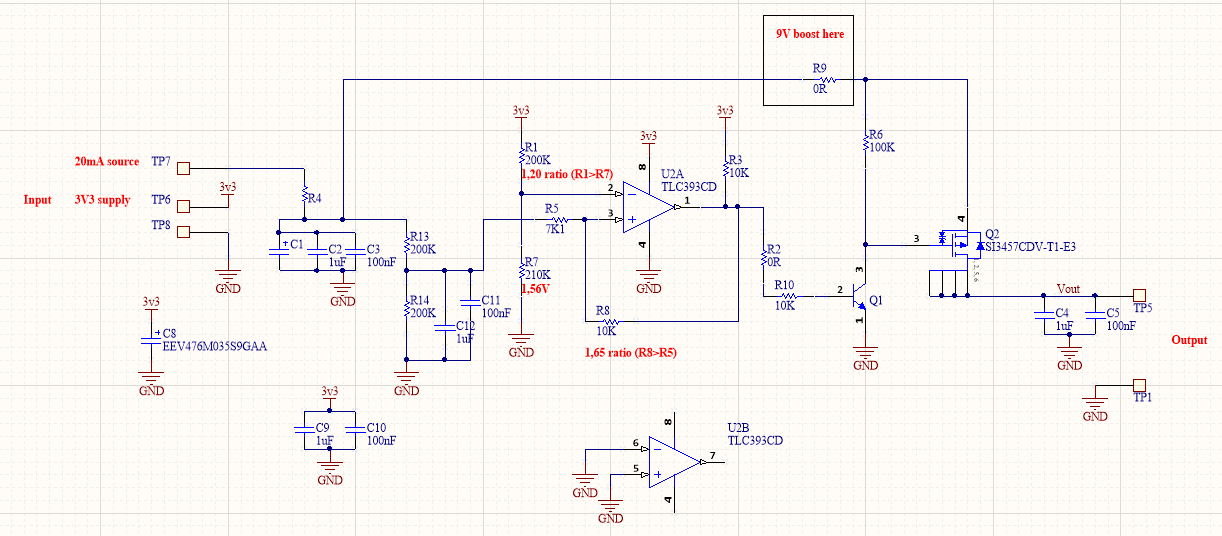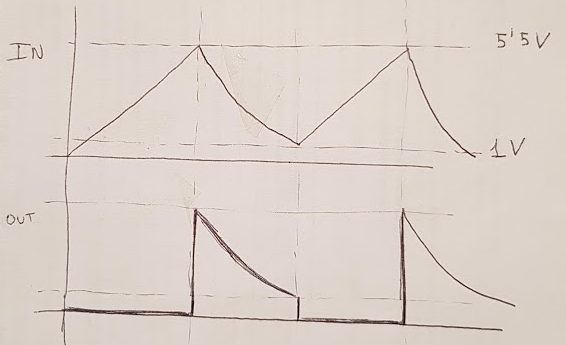I have only 20mA in my circuit and after trying to charge a battery with TP4056 it doesn't work. TP4056 is a linear charger so I need to try with LTC4002 or even better to improve efficiency. Anyway, my first attempt was to implement a charge pump like this:
My goal is to obtain 100mA or more (8v) pulses from 20mA @ 8V input. To do this, I used a supercapacitor connected to a hysteresis comparator so when Vcap is >5V output is enabled, so pulse can be done and feed the li-ion charger, and when Vcap is bellow 1V this output is disabled so supercapacitor can charge again.
This is the schematic:
 (Some resistor values was changed over the tests...)
(Some resistor values was changed over the tests...)
and this is the expected output:

I tested it with a load and circuit seems to be successfully enabled, but if load is present seems like is not able to disable comparator output and some weird waveforms happens.
Maybe this schematic is not the best approach to solve the problem: any suggestions?
------- EDIT -------------------------------------------------------------------
This power supply is for a GSM device with peaks of 2A but average of 60mA. The device will sleep some days and some hours a day, so can be "recharged" in this moments. Supercapacitor can do the job of charge/discharge, but since consumption is higher that the one who a supercapatitor can give, I considered a battery.
